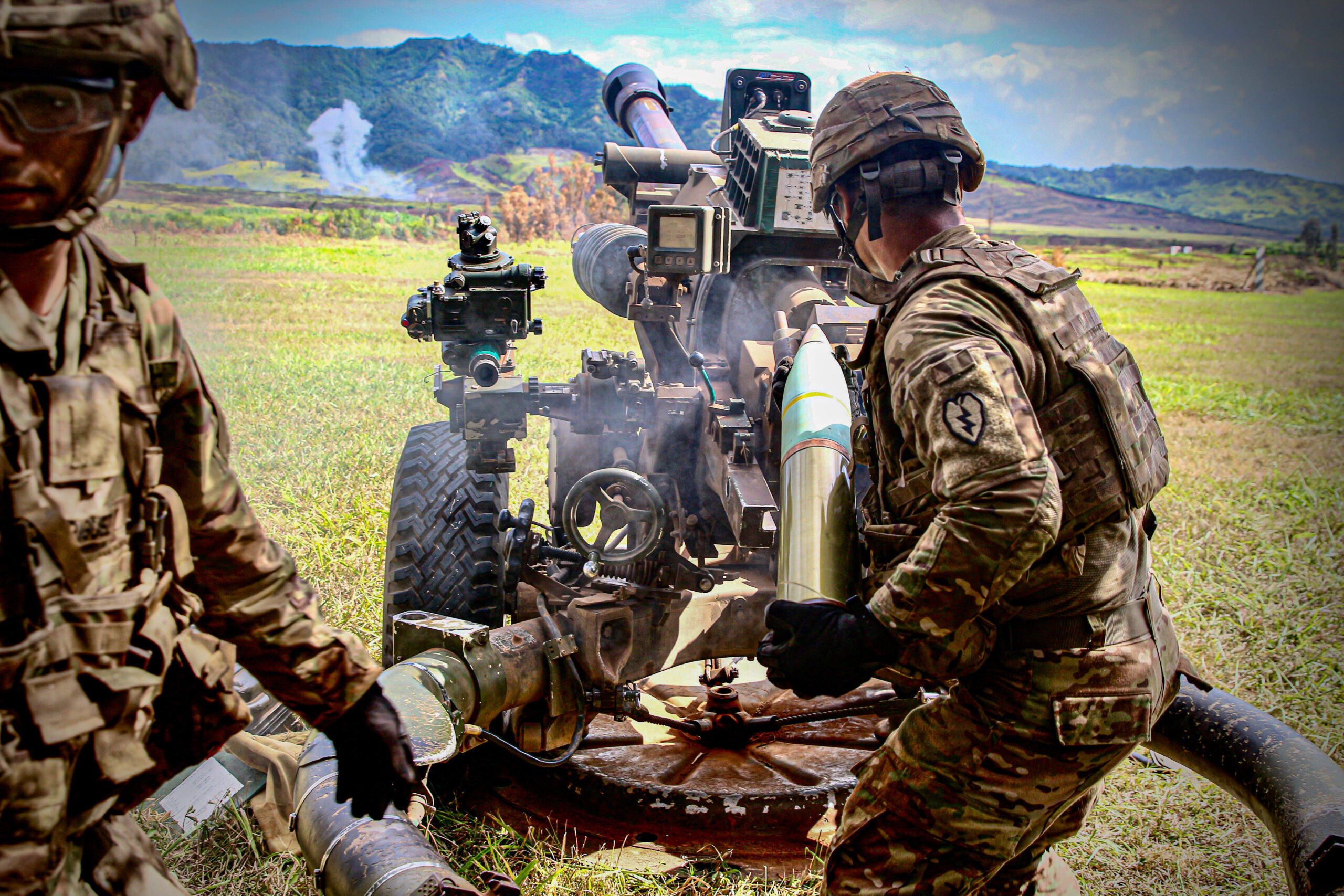

The industrial ramp-up of artillery production in response to U.S. support for Ukraine in the last 12 months will help the U.S. support Israel in a potential long-term war with Hamas, the Army’s chief acquisition official said.
The Pentagon and civilian arms markers in increased munition production to refill depleted U.S. stockpiles from support to Ukraine and increased ally and partner demand, Doug Bush, assistant secretary of the Army for Acquisition, Logistics, and Technology said in September. The goal is to produce 100,000 shells per month by fiscal 2025.
On Saturday, Hamas and Islamic Jihad-backed militants led an unprecedented attack on Israel by air, land, and sea –which led to a declaration of war by Israeli Prime Minister Benjamin Netanyahu that day. More than 1,100 Israelis and Palestinians have been killed, including 11 Americans.
“The fact that we are already ramping up several production lines would position us hypothetically to help them more than if we were kind of in the pre-war mode,” Bush told Task & Purpose.
However, Army Secretary Christine Wormuth said Monday that the Department of Defense would need additional funds from Congress in order to simultaneously support Israel and Ukraine.
The U.S. is “working as fast as possible” to provide needed munitions and other equipment, a senior official told reporters on a phone call Monday.
“Planes have already taken off, and we anticipate seeing continual delivery on some of the requests Israel has made,” the official said. “We’re also contacting U.S. industry to gain expedited shipment of pending Israeli orders for military equipment that otherwise may have been considered routine for movement.”
Subscribe to Task & Purpose Today. Get the latest military news and culture in your inbox daily.
The defense industrial base has asked the Defense Department for stronger demand signals and funding in order to restart old lines of artillery production that lulled during a lack of U.S. conflict participation.
Bush said U.S. support could “hypothetically cut across a wide range of things from small arms all the way up to more sophisticated munitions,” Bush said but added that it was too early to give specifics.
“We’re not diminished. We might get a little lower in some cases, but we keep reserves,” he said at a press conference at the Association of the United States Army’s 2023 conference.
The US has spent billions of dollars on munition production and replenishment and is using multi-year contracts to give defense contractors better visibility into longer-term DOD demands.
“If $20 billion in replenishment contracts and $13 billion in USAI [Ukraine Security Assistance Initiative] isn’t a demand signal, I don’t know what is,” Bush said.
U.S. weapons support will depend on the types of missions that Israel wants to carry out, Bush said.
Israel has called up hundreds of thousands of reservists and pledged a “complete siege” on Gaza — a region housing more than two million people inside an area of 360 sq. km (nearly 139 sq. miles) or twice the size of Washington D.C.
Hamas took control of the Gaza Strip in 2007 and it has been the site of numerous skirmishes over the years with Palestinian militants targeting southern Israeli towns with rocket and mortar strikes. Palestinians say the strikes are a product of years of oppression and discrimination by the Israeli government.
The U.S. has already sent its USS Gerald R. Ford Carrier Strike Group to the region which includes the Navy’s USS Gerald R. Ford aircraft carrier, the Ticonderoga-class guided missile cruiser USS Normandy, and guided missile destroyers. They’re also augmenting regional Air Force F-35, F-15, F-16, and A-10 fighter aircraft squadrons.
The latest on Task & Purpose
- Opinion: In the name of health care freedom, millions of veterans may lose theirs
- Special Forces vs special operations forces — what’s the difference?
- Commandant wants all Marines to do a tour in the Indo-Pacific
- VA claims processors overwhelmed, quitting from high case load
- First photos of 101st Airborne soldiers testing the Army’s new rifles